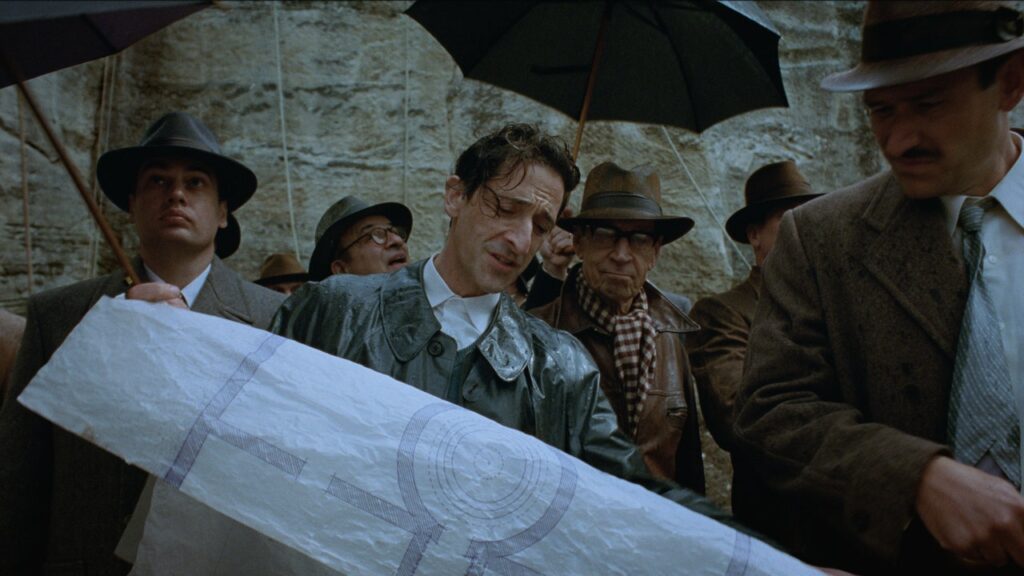[ad_1]
The Brutalist is a film that announces itself. Even before entering the theater, the three-and-a-half hour runtimeâwith intermissionâis a statement. Its dizzying opening images unfold fast, Daniel Blumbergâs musical score blares, and when the camera at last settles on the Statue of Liberty, framed upside down and then sideways, there can be little doubt about director Brady Corbetâs intentions. This is epic cinema of an old tradition, placing itself squarely in a long lineage of novelistic American portraiture onscreen. Greed, Gone With the Wind, East of Eden, The Godfather, Reds, Once Upon a Time in America, Malcolm X, and There Will Be Blood all come to mind. And when the end credits at last unspool, youâll be forgiven for thinking its production was as grand and lavish as the film itself. And then youâll learn it was made for only $10 million.
âI definitely knew that the movie was not possible to make for less than $8 million,â says Corbet, who directed the film and co-wrote it with his partner, Mona Fastvold. For such a lengthy period movie, shot on film, spanning decades and vast expanses of geography, to even think it could be brought in for a sum so low almost sounds fanciful. In 2018, when Corbet was first trying to get The Brutalist off the ground, the budget tabulations were around $28 million. âThe line producer was like, âIâm being conservative, you know?ââ Corbet recalls. âI was just like, âThat’s bullshit. I mean, that’s such fucking bullshit. We don’t need to make this thing look like Sweeney Todd.ââ
The Brutalist hardly screams âlow-budget indie.â Adrien Brody plays László Tóth, a Jewish Hungarian architect who escapes Europe after World War II and emigrates to America. After attempting to establish himself in Philadelphia, he is taken in by a patron, a wealth industrialist played by Guy Pearce, who commissions him to design and oversee the building of a great monument, a giant community center on a hill overlooking Doylestown, Pennsylvania over a decade of fits and starts. The film is huge in scope and style, and it represents a leap for the filmmaker, but not a massive one. His first two filmsâThe Childhood of a Leader, which recreated Europe during the Treaty of Versailles negotiations at the end of the First World War, and Vox Lux, a more contemporary-set film that nonetheless stages a whole pop concert in its final actâeach feel similarly lofty despite being made with similarly tight resources.
Corbet and Fastvold, with five features under their belts between them, knew well what they could achieve with a low budget, but others took convincing. âMost people just couldn’t wrap their head around the ambition of the project,â Corbet says. âAnd I kept telling everybody, like, âListen, we shot Vox Lux in 22 days. We’re pretty accustomed to operating without a safety net.â Their experience also meant they didnât hold back in crafting the screenplay. âWe did our very best not to edit ourselves too much. It became clear pretty early on that it was going to be a long script and a big story, and Mona and I just sort of said to ourselves, you know, We’ll figure it out.â
[ad_2]
Source link

